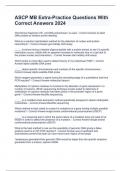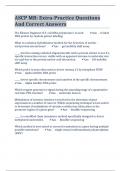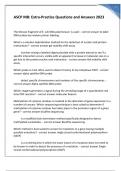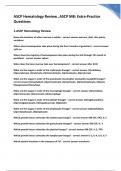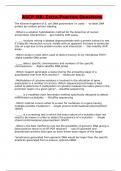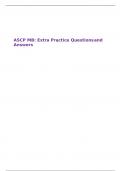Ascp mb extra practice - Study guides, Class notes & Summaries
Looking for the best study guides, study notes and summaries about Ascp mb extra practice? On this page you'll find 38 study documents about Ascp mb extra practice.
Page 2 out of 38 results
Sort by
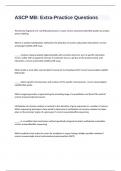
-
ASCP MB: Extra-Practice Questions with 100% correct answers
- Exam (elaborations) • 23 pages • 2024
-
- $17.49
- + learn more
The Klenow fragment of E. coli DNA polymerase I is used: correct answersto label DNA probes by random primer labeling. What is a solution hybridization method for the detection of nucleic acid:protein interactions? correct answersgel mobility shift assay _____ involves mixing a labeled oligonucleotide with a protein extract to see if a specific interaction occurs, visible with an apparent increase in molecular size on a gel due to the protein:nucleic acid interaction. correct answersGel mo...
ASCP MB Extra-Practice Questions With Correct Answers 2024
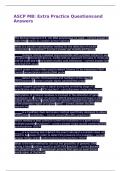
-
ASCP MB: Extra Practice Questions and Answers
- Exam (elaborations) • 24 pages • 2023
- Available in package deal
-
- $9.49
- + learn more
ASCP MB: Extra Practice Questions and Answers
ASCP MB: Extra-Practice Questions And Correct Answers

-
ASCP MB: Extra-Practice Questions with correct answers 2024
- Exam (elaborations) • 17 pages • 2024
-
- $7.99
- + learn more
ASCP MB: Extra-Practice Questions with correct answers 2024 The Klenow fragment of E. coli DNA polymerase I is used: - answer-to label DNA probes by random primer labeling. What is a solution hybridization method for the detection of nucleic acid:protein interactions? - answer-gel mobility shift assay _____ involves mixing a labeled oligonucleotide with a protein extract to see if a specific interaction occurs, visible with an apparent increase in molecular size on a gel due to the prot...
ASCP MB: Extra-Practice Questions and Answers 2023
ASCP Hematology Review + ASCP MB: Extra-Practice ASCP Hematology Review + ASCP MB: Extra-Practice ASCP Hematology Review + ASCP MB: Extra-Practice
ASCP MB: Extra-Practice Questions
ASCP MB: Extra Practice Questions and Answers
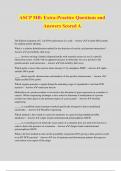
-
ASCP MB: Extra-Practice Questions and Answers Scored A
- Exam (elaborations) • 18 pages • 2024
-
- $12.49
- + learn more
ASCP MB: Extra-Practice Questions and Answers Scored A The Klenow fragment of E. coli DNA polymerase I is used: - Answer ️️ -to label DNA probes by random primer labeling. What is a solution hybridization method for the detection of nucleic acid:protein interactions? - Answer ️️ -gel mobility shift assay _____ involves mixing a labeled oligonucleotide with a protein extract to see if a specific interaction occurs, visible with an apparent increase in molecular size on a gel due to...

Study stress? For sellers on Stuvia, these are actually golden times. KA-CHING! Earn from your study resources too and start uploading now. Discover all about earning on Stuvia

